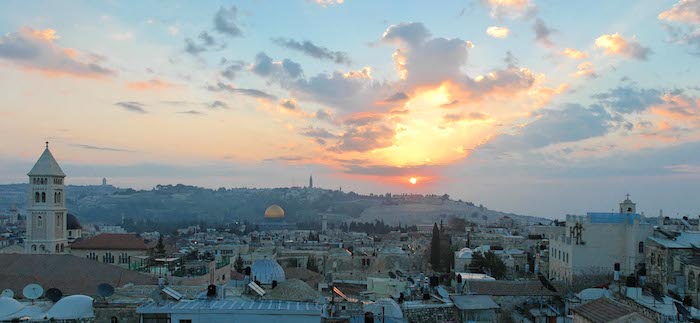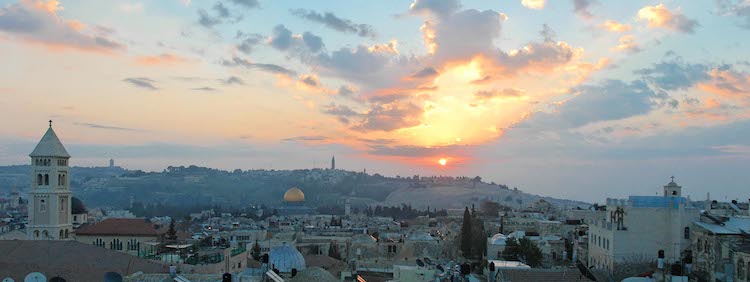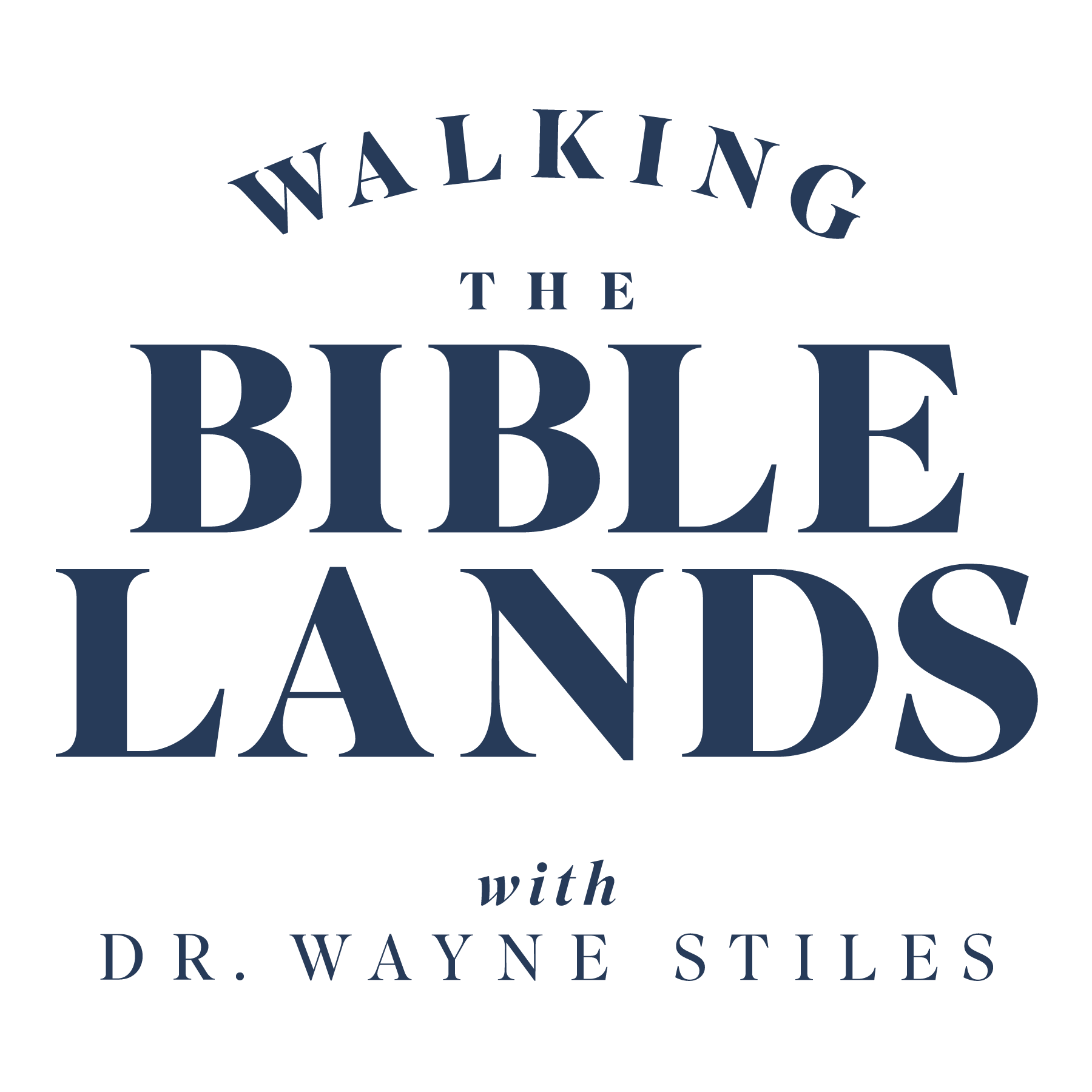
Between Palm Sunday and Easter Sunday Jesus spent every day in Jerusalem. The places of the Passion Week where He taught, died, and rose again are now traveled by Christian pilgrims.

(Photo: Sunrise over Jerusalem. Courtesy of the Pictorial Library of Bible Lands)
Last week I shared some 360-degree images from 11 various sites in Israel. This week I’m including some panoramic images I took from sites in Jerusalem—specifically, those that connect with the Passion Week of Jesus.
Just click on the images and drag right or left to look around!
The Mount of Olives from Dominus Flevit
Jesus began the Passion Week on Palm Sunday, descending the Mount of Olives on the back of a donkey—presenting Himself to Israel as their Messiah (Dan. 9:25; Zech. 9:9, 16; Matt. 21).
The site of the Dominus Flevit Church remembers the point where Jesus paused and wept over Jerusalem, knowing the leaders would reject Him and His offer of the kingdom.
See a full-screen view of the image.
The Southern Steps of the Temple Mount
The steps at the southern side of the Temple Mount provided access to the Temple for Jewish pilgrims. Jesus and His disciples would have used these steps to enter the temple during the Passion Week as Jesus taught on the Temple Mount.
These steps also would have been the place Jesus left the Temple for the final time.
See a full-screen view of the image.
The Western Wall
When Jesus left the Temple for the last time during Passion Week, He predicted the destruction of the Temple that would occur in AD 70 (Matthew 24:1–2). The ground beside the Western Wall is about 30 feet higher today than in Jesus’ time, because the Central Valley is filled with the rubble of the destroyed Temple.
The Western Wall represents the remains of the retaining wall that supported the Temple, and it represents modern Judaism’s holiest place.
See a full-screen view of the image.
The Upper Room and Courtyard
On Thursday evening of Passion Week, Jesus and His apostles celebrated Passover in an upper room on the Western Hill of Jerusalem (Mark 14:15). The building is different today but represents the same air space where the Last Supper occurred.
Some of the building’s stones in the courtyard below the Upper Room are those of a first-century Judeo-Christian Synagogue. Its orientation toward the Holy Sepulcher instead of the Temple reveals that it was also a church, venerating the site of the Last Supper.
See a full-screen view of the image (and here).
The Kidron Valley
After leaving the Upper Room, Jesus and His disciples made their way across the Kidron Valley toward the Garden of Gethsemane (John 18:1). This large monument was in the valley at that time, and Jesus would have seen it.
See a full-screen view of the image.
The Garden of Gethsemane and Church of All Nations
The Lord’s agonizing prayer and surrender in the Garden of Gethsemane is commemorated inside the Church of All Nations.
In this garden, Judas betrayed Jesus and all of the Lord’s disciples deserted Him (Matt. 26:48-56).
See a full-screen view of the image (and here).
The Church of St. Peter in Gallicantu
After Jesus’ arrest, the soldiers brought Him to Caiaphas, the High Priest (Matt. 26:57). The Church of St. Peter in Gallicantu commemorates the denial of Peter (Gallicantu means “rooster crowing”).
The Hinnom Valley flanks this site and the panorama shows a monastery near the valley at Akeldema, the “field of blood” where Judas hung himself.
See a full-screen view of the image.
The Church of the Holy Sepulcher
Jesus Christ was crucified and buried at sites best identified as inside the Church of the Holy Sepulcher.
On that first Easter Sunday, Jesus rose from the dead (Matt. 28:7). The location of His tomb (sepulcher) is covered with the beautiful dome seen below.
See a full-screen view of the image (and here).
BONUS SITES
Although these sites aren’t connected with the Passion Week, they’re worth including, as they still connect with Jesus’ ministry in Jerusalem.
The Pools of Bethesda and St. Anne’s Church
Jesus healed a lame man at these pools (John 5). The nearby St. Anne’s Church honors Mary’s parents.
See a full-screen view of the image (and here).
The Pool of Siloam
Jesus sent a blind man to this pool to wash the mud from his eyes, and when he did, he was healed (John 9:7).
See a full-screen view of the image.
Tell me what you think: Which of the places of the Passion Week most fascinates you? To leave a comment, just click here.
Click here to leave a comment.
-1.png?width=5230&height=1198&name=unnamed%20(4)-1.png)

.jpg?width=350&name=Wayne-books-350wide%20(1).jpg)




